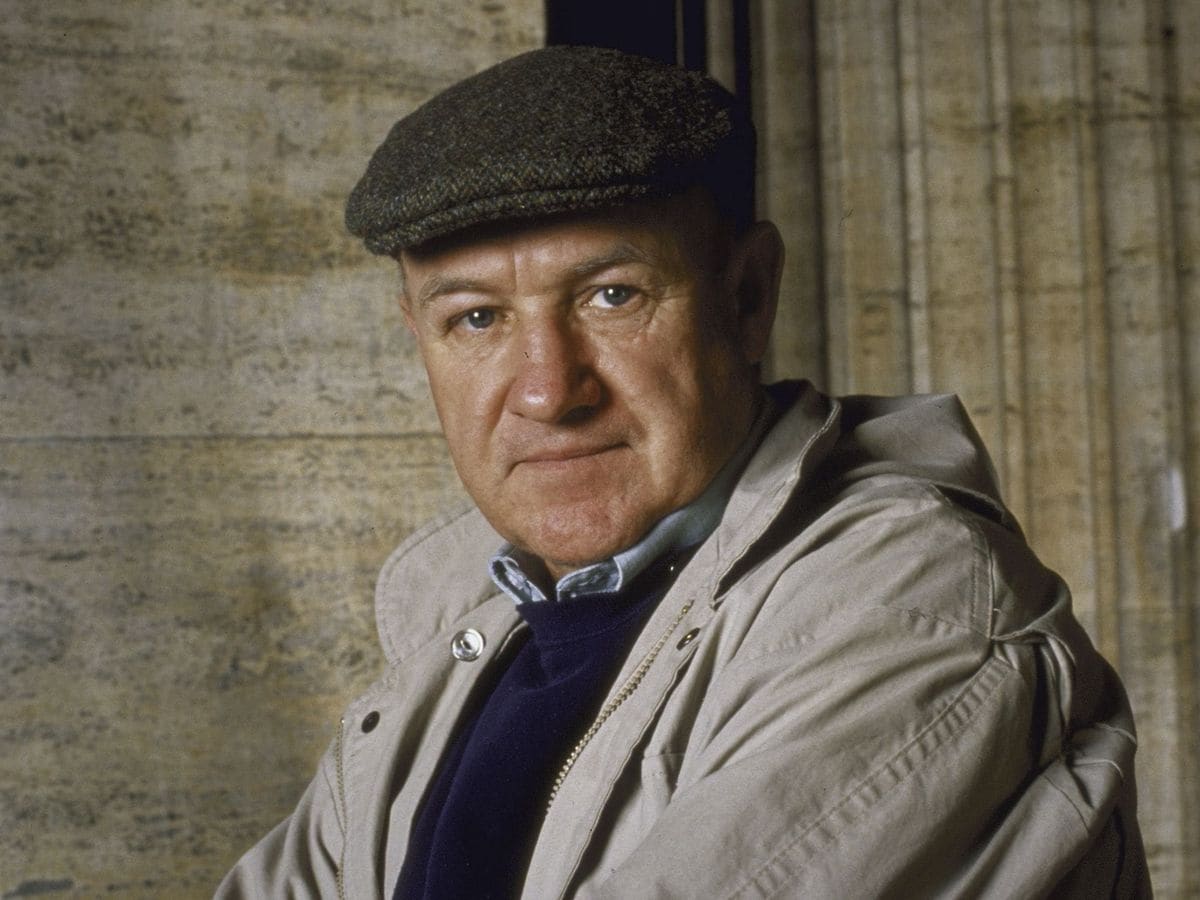Gene Hackman, a towering figure in Hollywood, was found dead in his Santa Fe home alongside his wife, Betsy Arakawa, and their beloved dog. The sudden loss of a legend who never craved the spotlight stunned fans and peers upon the discovery. With no evidence of foul play or a clear cause of death, his passing on February 27, 2025, remains cloaked in mystery—an enigmatic end to a life that enthralled audiences for over eight decades.
A childhood shadowed by loss
Born in 1930 in San Bernardino, California, Hackman grew up in Danville, Illinois, where hardship found him early. At 13, he endured a defining blow: his father abandoned the family, driving off one day without a word. Years later, Hackman recalled the moment with quiet resignation: “The way he looked at me, I knew he wasn’t coming back.” Raised by his mother, Anna Lyda Hackman, in modest circumstances, he escaped into the gritty worlds of actors like James Cagney, whose raw intensity mirrored his own reality.
But stability remained elusive. A restless and defiant teenager, Hackman dropped out of school at 16, falsifying his age to enlist in the Marine Corps. Stationed in China and Japan as a radio operator, his rebellious streak sparked clashes with authority, earning him multiple demotions. A car accident in 1952 ended his military stint, leaving him adrift. Back home, he bounced between odd jobs until acting ignited a spark within him.Tragedy struck again in 1962. A fire, fueled by his mother’s struggles with alcohol and smoking, engulfed her home, claiming her life. The loss severed any hope of mending their fractured bond, burdening Hackman with a lingering ache of guilt and grief.
Rising from rejection
Determined to find purpose, Hackman enrolled at the Pasadena Playhouse, a respected acting school. Instead of support, he met scorn—branded the student “least likely to succeed.” Undeterred, he headed to New York, where he forged a brotherhood with fellow struggling actors Dustin Hoffman and Robert Duvall. Living in rundown apartments and scraping by, they fueled each other’s dreams of breaking through.His persistence paid off in 1967 with Bonnie and Clyde.
Playing Buck Barrow, Hackman earned his first Oscar nomination and caught Hollywood’s eye. Four years later, his electrifying turn as the tenacious Popeye Doyle in The French Connection (1971) won him his first Academy Award, cementing his place among the elite. From there, he delivered unforgettable roles in films like The Poseidon Adventure (1972), The Conversation (1974), and Superman (1978), where his sly Lex Luthor became iconic. In 1992, his chilling portrayal of Sheriff Little Bill Daggett in Unforgiven earned him a second Oscar, proving his mastery of complex characters.
A Reluctant star
Despite his accolades, Hackman never embraced Hollywood’s glitz. He dodged interviews, skipped parties, and poured his energy into roles that reflected his own depth and turmoil. His authenticity—rooted in a lifetime of adversity—set him apart. Yet, after Welcome to Mooseport in 2004, he stunned the industry by retiring. Settling in New Mexico with Betsy, his wife of over 30 years, he traded scripts for novels, finding solace in writing.
Echoes of resilience
Retirement didn’t erase Hackman’s fire. In 2012, while strolling with Betsy in Santa Fe, he slapped a homeless man who’d verbally accosted her. The incident, though reported, faded without charges—a testament to his protective instincts. Later that year, a car struck him while he cycled in the Florida Keys. At 82, he was airlifted to safety and recovered, his durability unshaken.
A quiet, unanswered exit
On February 27, 2025, Gene Hackman and Betsy were found lifeless in their Santa Fe sanctuary. The absence of violence or explanation has left their deaths a haunting riddle. From an abandoned boy to a defiant youth to a reluctant icon, Hackman’s life was a tapestry of struggle and triumph. Shaped by loss, he confronted the world according to his own terms, leaving behind a legacy that is both enduring and enigmatic.
,type=downsize)
